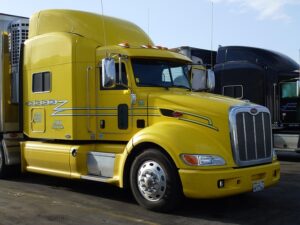California Car Registration: Step-by-Step Guide with VIN Verification
Registering a car in California involves understanding a straightforward process. This comprehensive guide breaks down each step, from gathering essential documents to conducting a crucial VIN (Vehicl…….

Registering a car in California involves understanding a straightforward process. This comprehensive guide breaks down each step, from gathering essential documents to conducting a crucial VIN (Vehicle Identification Number) verification. Learn how to prepare your paperwork efficiently and navigate the application process with ease. By following these clear instructions, including a detailed VIN verification guide, you’ll ensure a smooth registration experience for your California vehicle.
- Understand the California Vehicle Registration Process
- Prepare Required Documents for Car Registration
- Conduct VIN Verification: A Step-by-Step Guide
- Submit Application and Pay Fees for Car Registration
- Pick Up Your Registered Vehicle Plate and Documents
Understand the California Vehicle Registration Process

Understanding the California vehicle registration process is crucial before diving into the steps to register your car. In this state, the Department of Motor Vehicles (DMV) oversees all registration procedures, ensuring that every vehicle on the road meets safety and environmental standards. One key aspect of the process is the VIN verification, where a unique Vehicle Identification Number (VIN) inspection plays a vital role. This step ensures the authenticity and history of your car, which is essential for legal registration.
A mobile vin verifier or a professional vin inspection service can facilitate this process by providing accurate data on the vehicle’s condition, previous ownership, and any reported accidents or damages. In terms of convenience, many California residents opt for these mobile services to save time and effort, as they offer on-site VIN verification, streamlining the registration experience significantly.
Prepare Required Documents for Car Registration

Before you begin the registration process, ensure you have all the necessary documents ready. The California Department of Motor Vehicles (DMV) requires a range of information to verify your vehicle’s ownership and history. One crucial step is completing a Vehicle Identification Number (VIN) verification, which establishes the car’s authenticity. This involves checking the VIN against reliable databases to match it with the manufacturer’s records.
For a seamless process, gather important papers such as the title, registration certificates from previous states (if applicable), insurance proof, and a valid driver’s license. Additionally, consider using a mobile VIN inspection service that provides on-site verification, making it easier to ensure your documents meet DMV standards without unnecessary delays.
Conduct VIN Verification: A Step-by-Step Guide

To begin the registration process for your car in California, conduct a Vehicle Identification Number (VIN) verification. This step is crucial as it ensures that your vehicle’s details match the information on record. Here’s a simple guide to help you through the process.
1. Locate Your VIN: Find the 17-character unique identifier located on the vehicle’s certificate of origin, engine, or transmission. If you have the title, it should also be on there. For older cars, check under the hood or consult the owner’s manual.
2. Choose a Mobile Vin Verifier: Utilize services like a mobile vin inspection tool that allows you to complete the verification remotely. These tools compare your VIN with data from various sources, including the California Department of Motor Vehicles (DMV).
3. Input Your VIN: Simply enter or type in your vehicle’s VIN into the chosen service’s platform. Most mobile vin verifiers will provide step-by-step instructions for this process.
4. Review Results: After processing, you’ll receive a report confirming whether the VIN is valid and matches California records. This ensures that there are no discrepancies between the manufacturer’s data and what’s on file with the DMV.
Submit Application and Pay Fees for Car Registration

To complete the car registration process in California, it’s time to submit your application and pay the required fees. After ensuring that all necessary documents are prepared, including proof of insurance, identification, and ownership through a valid title or purchase agreement, you’ll need to conduct a VIN verification. This step involves using a mobile vin verifier to ensure the vehicle’s identity and history match the information provided in the application. The California Department of Motor Vehicles (DMV) offers various options for this, including online submissions and in-person visits at designated DMV offices or third-party service centers.
During the application process, be prepared to pay the registration fee, which includes a base cost plus any additional charges based on your vehicle’s type and emissions status. Once all paperwork is in order and fees are paid, you’ll receive your new registration documents and license plates, marking the official registration of your car in California. Remember, proper documentation and accurate information are crucial for a smooth registration experience.
Pick Up Your Registered Vehicle Plate and Documents

After successfully completing your vehicle registration process, it’s time to collect your registered vehicle plate and essential documents. This crucial step ensures your car is legally recognized on California’s roads. Typically, you can expect to receive your license plate and registration papers in the mail a few weeks after submission. However, some counties offer the option to pick them up immediately following approval, enhancing convenience for residents.
Remember, proper documentation is key. Ensure you have your vehicle’s Certificate of Registration and License Plate along with any other relevant paperwork. For added peace of mind, consider utilizing mobile vin verification services, such as those provided by a mobile vin inspector or verifier, which can confirm your vehicle’s identity and history before you leave the DMV, streamlining the process further.
Registering a car in California is a straightforward process that requires attention to detail. By understanding the steps involved, preparing the necessary documents, and successfully conducting a VIN verification, you can ensure a smooth registration experience. Remember to keep your vehicle’s documentation up-to-date to avoid any legal issues. With these simple steps, you’ll be cruising down the California highways in no time!







